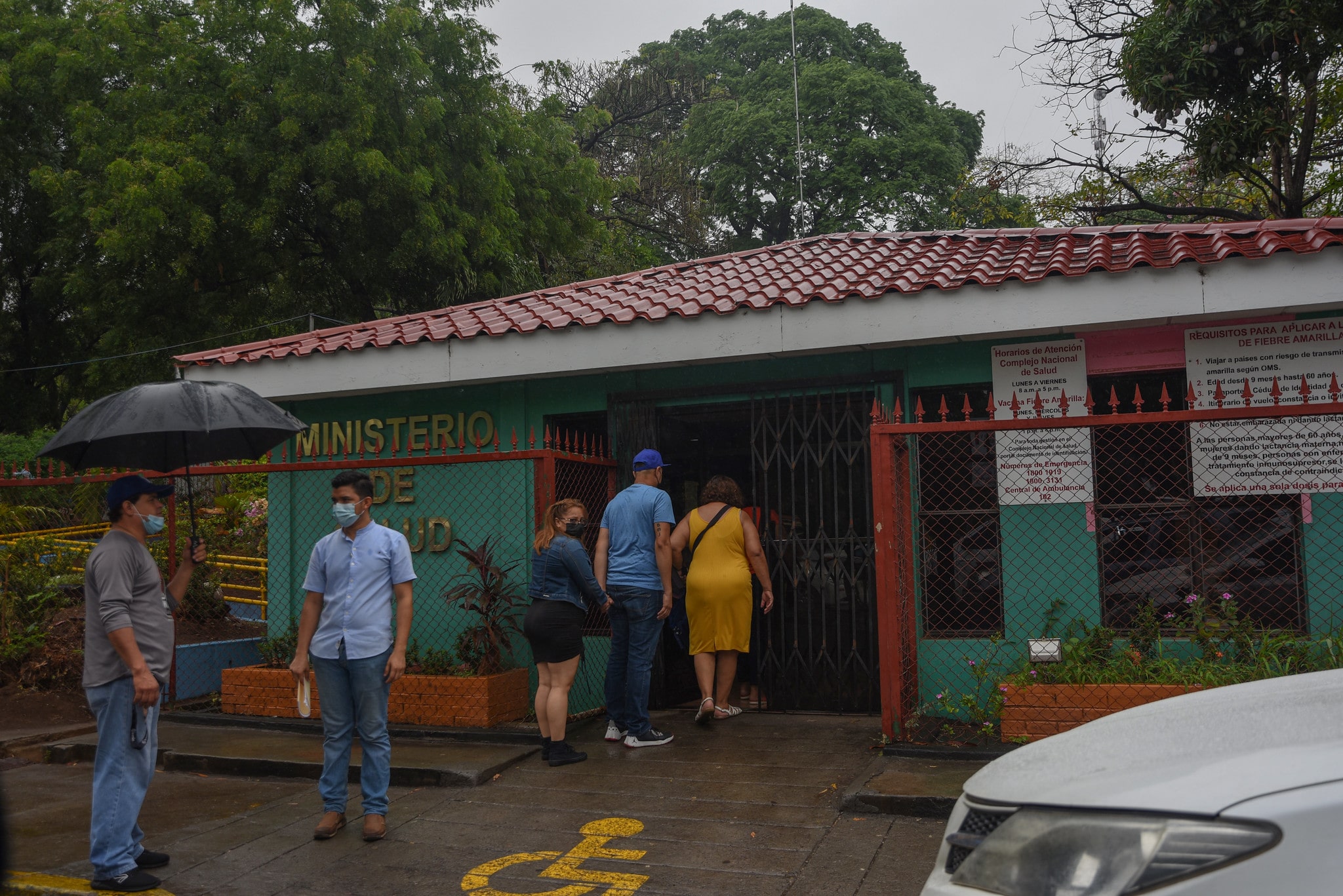The Ministry of Health (Minsa) has just unpacked and published a series of 36 epidemiological bulletins from 2021, in which it reveals some data on the behavior of covid-19 and other epidemics such as dengue, malaria and pneumonia. However, the authorities deliberately concealed the data on deaths from pneumonia, which previously allowed to alert an excess of deaths from this disease that would be attributable to the covid-19 pandemic, as happened in May 2020, when it suspended the online publication of these public health documents.
The last time that the Minsa published the epidemiological bulletins was in May of last year, when independent doctors warned of an unusual increase in deaths from pneumonia, which were actually deaths due to covid-19, but that the Authorities classified as “atypical pneumonia”, one of the four causes of death used by the Government of Daniel Ortega to try to hide the number of deaths caused by the pandemic, as demonstrated by journalistic investigations of CONFIDENTIAL, based on the analysis of official data, information from independent medical sources and the testimony of the victims and their families.
The bulletins now unpacked also reveal that, during the first 20 months of the pandemic, the National Center for Diagnosis and Reference (CNDR) of the Minsa, carried out a total of 128,163 PCR tests to identify SAR-CoV-2, the virus that causes the covid-19 disease, which in its first year left an estimated 9,000 deaths and this year has left about 3,075 deaths, according to data from the independent COVID-19 Citizen Observatory, whose monitoring capacity has been affected by terror imposed by the regime in the recrudescence of the police state in the country.
Pneumonia increased along with covid-19 outbreak
The 2020 epidemiological bulletins, however, were not updated. The last bulletin of that year published covers until the week of May 11 to 17, as verified CONFIDENTIAL. Thus, the Minsa skipped until 2021, including the documents to week 40 of the year, which includes October 11-17. However, there were also three bulletins of this 2021 that were not disclosed: those of week eight, 21 and 34.
The trend of pneumonia reveals that there was an increase in cases on the same dates that COVID-19 infections rose. In 2020, there were two peaks: one between May and June, and another even higher, in December. As he warned then an analysis of the defunct Multidisciplinary Scientific Committee, which dissolved itself before the political persecution of the Government, during the New Year’s Eve there was an increase in deaths from pneumonia.
Data for 2021 indicate that there was a peak of pneumonia in January and the trend continued in the following months, until, in mid-August, the number of cases skyrocketed. This trend coincides with the outbreak of covid-19 that occurred between August and last October, which hit the north of the country and left at least 10,948 infections, according to the Citizen Observatory.
“In Nicaragua, up to week 40, it closes with an accumulated number of cases of 67,538 (pneumonia cases) with a rate of 131 per 10,000 inhabitants, increased in relation to the rate observed in the 2020 season for the same period (118 per 10,000) ”, explains the Minsa in the epidemiological bulletin.
Likewise, the Minsa compared the figures of pneumonia cases for 2020 and 2021 with those of 2019, in an attempt to minimize them, since in that last year there was a high tendency to develop this disease.
CNDR averaged 6,400 PCR tests per month
The latest epidemiological bulletin published in 2021 reveals that on average the CNDR, which is the only one authorized at the national level to perform PCR tests at a cost of $ 150, carried out an average of 6,400 tests per month. However, it is unknown how many of these tests are from citizens who have paid for them for travel reasons and how many from suspicious patients.
However, with these data indicated by the Minsa, Nicaragua ranks as the country with the fewest tests carried out on its population in Central America. According to data collected by the statistics site Worldometers, which was analyzed by CONFIDENTIALFor every 1000 inhabitants, the Minsa would carry out 19 tests. A miniscule amount compared to the rest of the Central American countries. For example, Costa Rica performs 30 times more tests than Nicaragua and Panama 51 times more.
According to this bulletin, which is the only one of the 36 published documents that reveals this information, during the week of October 11 to 17, they would have carried out 2306 tests. However, in that period there were only 429 confirmed cases. That is, the positivity of the tests in that week was 18.60%.
However, a leak of data from the NDRC on the tests carried out by the Minsa between March and July 2020, attributed to the hacker group “Anonymous”, revealed that in that period the percentage of positivity to SAR-CoV-2 was 56 %.
Women are the most contagious
The data collected by epidemiological bulletins also indicates that during 2021, women were the most infected with covid-19. Of all the positive cases in the year, 56.44% are from women and 43.56% from men.

Likewise, a graph made by the Minsa reveals that the largest number of infected people were between 20 and 34 years old, followed by those between 35 and 49 years old. This behavior coincides with the alert of the doctors who reported a greater contagion in young people during the regrowth, unlike the first wave of 2020.
According to the graph, there are cases reported in the population older than 60 years, but these were less. Likewise, there were infections in adolescents between 15 and 19 years old, most of them women.
This is the first time that the authorities reveal details about the ages and genders of the positive cases to SAR-CoV-2 and the characteristics coincide with the variants of concern, which according to medical opinions triggered the second wave of covid-19 of 2021. But the bulletins unpacked by the Minsa do not reveal any data on the circulation of variants of covid-19 in Nicaragua.

















